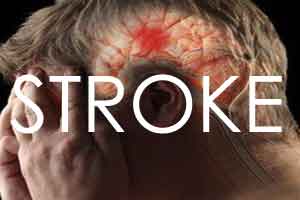- Home
- Editorial
- News
- Practice Guidelines
- Anesthesiology Guidelines
- Cancer Guidelines
- Cardiac Sciences Guidelines
- Critical Care Guidelines
- Dentistry Guidelines
- Dermatology Guidelines
- Diabetes and Endo Guidelines
- Diagnostics Guidelines
- ENT Guidelines
- Featured Practice Guidelines
- Gastroenterology Guidelines
- Geriatrics Guidelines
- Medicine Guidelines
- Nephrology Guidelines
- Neurosciences Guidelines
- Obs and Gynae Guidelines
- Ophthalmology Guidelines
- Orthopaedics Guidelines
- Paediatrics Guidelines
- Psychiatry Guidelines
- Pulmonology Guidelines
- Radiology Guidelines
- Surgery Guidelines
- Urology Guidelines
One-Stop Management of Acute Stroke Patients

It is vital to minimize door-to-reperfusion time in Acute Stroke Patients as generally Intrahospital time delays significantly affect the neurological outcome of stroke patients with large-vessel occlusion.
Marios-Nikos Psychogios et al. conducted a retrospective observational study to determine whether a one-stop management can reduce intrahospital times of patients with acute large-vessel occlusion.In the study first 30 consecutive stroke patients were imaged and treated in the same room. The “one-stop” protocol entailed direct transportation to the angiography suite for flat detector head computed tomography (CT) and CT angiography with thrombectomy if indicated As part of protocol, the researchers transported patients with a National Institutes of Health Stroke Scale score of ≥10 directly to the angio suite, bypassing multidetector computed tomography (CT). Preinterventional imaging consisted of noncontrast flat detector CT and flat detector CT angiography, acquired with an angiography system. Patients with large-vessel occlusions remained on the angio table and were treated with mechanical thrombectomy; patients with small artery occlusions were treated with intravenous thrombolysis, whereas patients with an intracranial hemorrhage and stroke mimics were treated as per guidelines. Door-to-groin puncture times were recorded and compared with our past results.
In thirty patients who were transferred directly to angio suite from June to December 2016, the time from symptom onset to admission was 105 minutes. Ischemic stroke was diagnosed in 22 of 30 (73%) patients, 4 of 30 (13.5%) had an intracranial hemorrhage, and 4 of 30 (13.5) were diagnosed with Todd’s paresis. Time from admission to groin puncture was 20.5 minutes. Compared with 44 patients imaged with multidetector CT in the first 6 months of 2016, door-to-groin times were significantly reduced (54.5 minutes [95% confidence interval, 47–61] versus 20.5 minutes [95% confidence interval, 17–26]).
It was concluded that n this small series, a one-stop management protocol of selected stroke patients using latest generation flat detector CT led to a significant reduction of intrahospital times.

Disclaimer: This site is primarily intended for healthcare professionals. Any content/information on this website does not replace the advice of medical and/or health professionals and should not be construed as medical/diagnostic advice/endorsement or prescription. Use of this site is subject to our terms of use, privacy policy, advertisement policy. © 2020 Minerva Medical Treatment Pvt Ltd